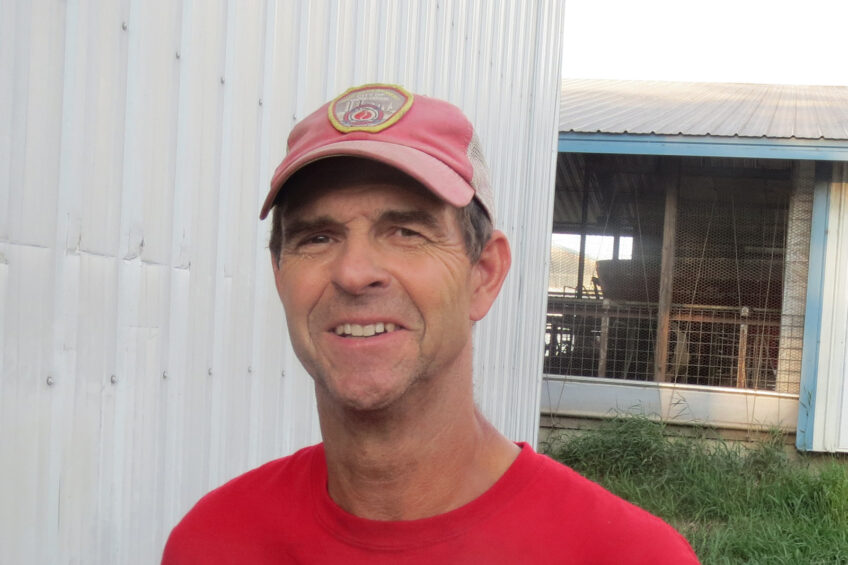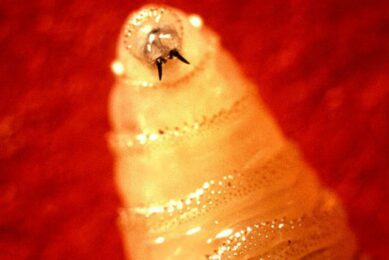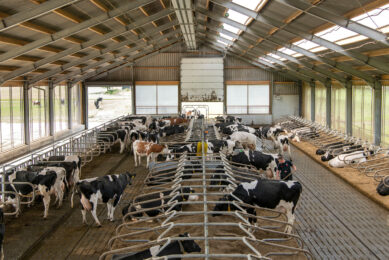US farmer Leedle invests in hardware and milk yield

Tom Leedle expanded from 220 to 480 lactating cows in 2012. He built a new 68×72 metre stable with cross ventilation and 8 milking robots. The dry cows and the young cattle have inhabited the older stables ever since.
Leedle’s choices deviated from regional tradition. First of all, he placed a cellar underneath the stable’s complete surface. “Lagoons would have to be at least 3 hectares and legislative demands are getting stricter, especially when they are situated on short distances from villages and cities.”
Leedle also chose rosters. “Moving manure is very time-consuming and we want to get by with as little hired labour as possible.” Leedle invested US$1 million in the stable’s cellars and rosters. The superstructure was $1.3 million, the Lely’s were $165,000 each. That brought the total investment to over $3.6 million or €3.2 million. Leedle used his own assets to finance the expansion. “We do not have a mortgage,” the farmer stated.
Profile
Name: Tom Leedle (59)
Town: Lake Geneva, Wisconsin, United States
Company: 550 dairy cows, 400 young cattle. 400 hectares (140 ha corn and corn cob silage, 140 ha soy beans and 120 ha Lucerne)
In the summer, Leedle feeds twice a day with the mixer wagon: a base ration of 21.6 kilograms of fodder and corn cob silage, 7.7 kilograms of lucerne, 4.5 kilograms of crushed corn, 0.9 kilograms of soy meal, 1.2 kilograms of molasses and 1 kilogram of premix. This produces a base ration of 28.5 kilograms of milk. The cows receive an average of 4.5 kilograms of concentrated feed a day, the milk production is a little over 36 kilograms.
Leedle delivers consumer milk to Dean Foods. After conversion, he makes €33 per 100 kilograms, with 4.0% fat and 3.30% protein, including a cent per kilogram because he does not use BST. “We used this until 2005. It increased the milk yield with at least 2.5 kilograms a day. This cost us a lot of money, because we had to inject all our cows every 14 days. Consumers have a hard time with it, this cent surcharge offsets the lost profits,” says Leedle. He pays a cent per kilogram for the transport of his milk to the factory 30 kilometres away.
America applies a strict fertility programme that includes the use of hormones. All cows were treated 40 days after calving to cleanse the uterus. When they are not in heat within 14 days, the treatment is repeated and they are inseminated a week later. “A dairy farm depends on cows that are in calf,” the farmer motivates his method. “The strange thing is that the consumer is anxious about BST but does not care about this. But of course, we do not talk about the synchronisation.”
Join 13,000+ subscribers
Subscribe to our newsletter to stay updated about all the need-to-know content in the dairy sector, two times a week.










